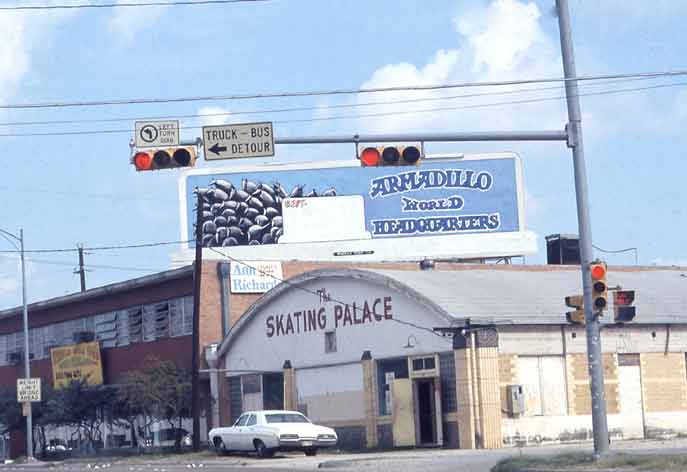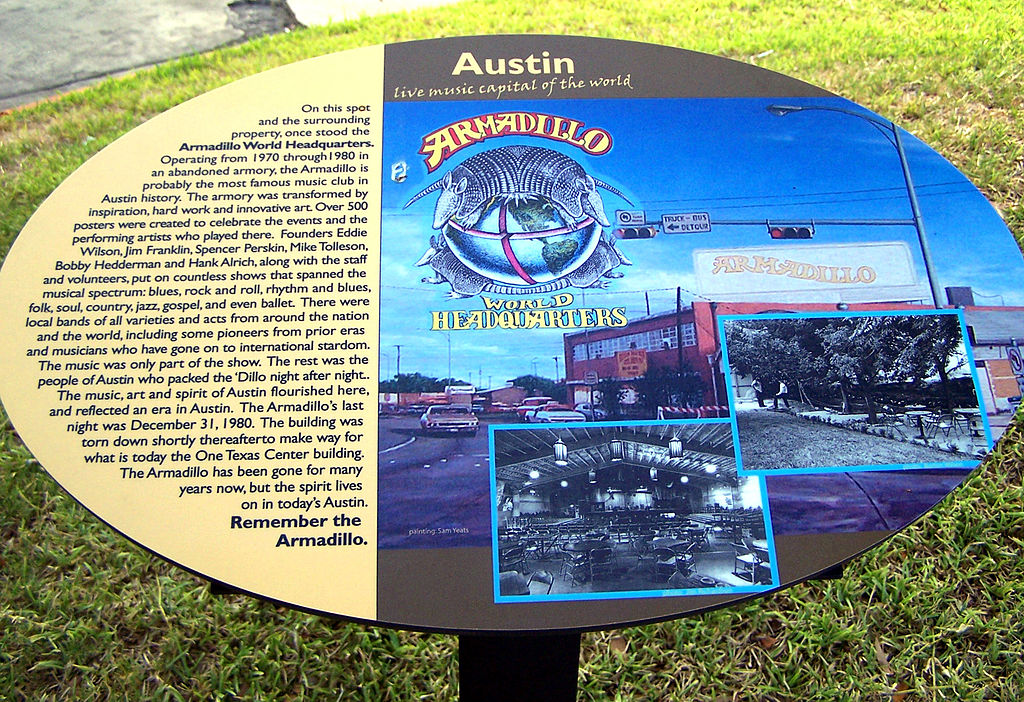The empty and nondescript building that Eddie Wilson happened upon one night in July of 1970 sparked the idea of a place where the band he managed, Shiva’s Headband, could play gigs and make money. With the closing of the psychedelic music venue The Vulcan Gas Company in 1970, there were few venues in Austin where non-mainstream bands could perform. A little over three weeks after that fateful night—on August 7, 1970—Wilson opened The Armadillo World Headquarters (AWHQ).
The placemaking of this building is not the structure itself, but rather the history of what went on in it and how it helped to nurture the future of the Austin music scene. Over the years, AWHQ hosted a wide variety of performers that included rock, blues, jazz, folk, and country. In turn, the venue attracted a diverse audience; hippies, rednecks, college students, and even politicians sat around sipping Lone Star and listening to music. The ’Dillo was a melting pot of people and sound. Over the years, AWHQ built up a reputation for quality music, attracting a variety of musicians who helped to establish Austin as a live music destination. A few of the legendary artists who played at AWHQ over the years include Talking Heads, Bruce Springsteen, the Ramones, Bette Midler, Willie Nelson, Roxy Music, Waylon Jennings, Van Morrison, and The Pointer Sisters.
In its best years, the AWHQ turned a profit. But with changing music tastes and the rise of disco—along with increased competition from venues such as the Austin Opry House—the AWHQ struggled to survive. Its demise was finalized in August 1980 when the property’s owner sold the ’Dillo to a developer who planned to demolish the building. AWHQ had one last blow-out New Year’s celebration December 31, 1980 to mark its final day in business. After demolition, the property sat vacant for years and changed owners several times before the 13-story office building that now occupies the site was constructed.
In just a decade, AWHQ had left a lasting mark on Austin and played a foundational role in the creation of its live music culture. Without the influence of AWHQ, Austin might not have blossomed into the “Live Music Capital of the World.” – Patricia Hunt, AIA

